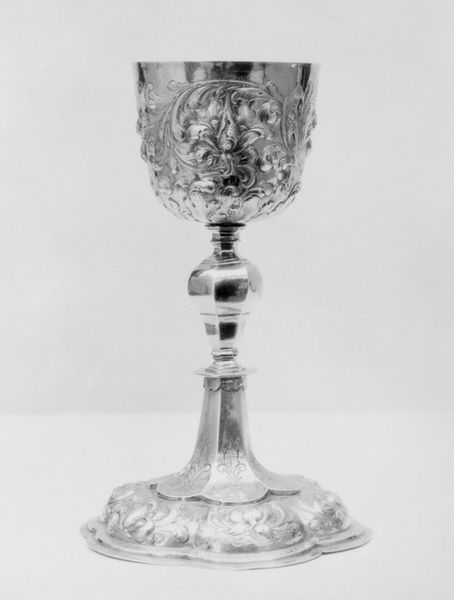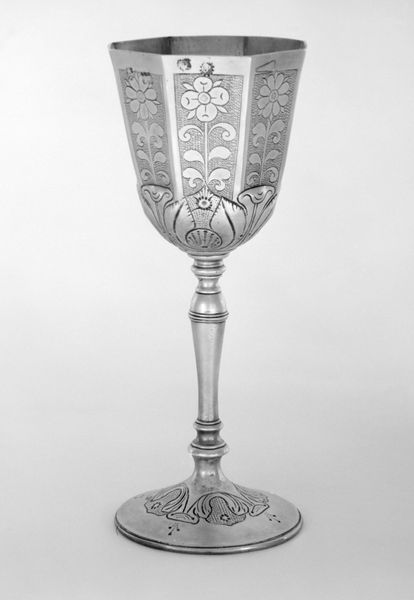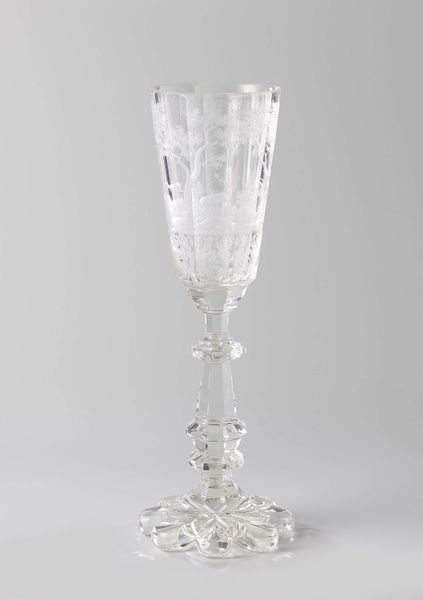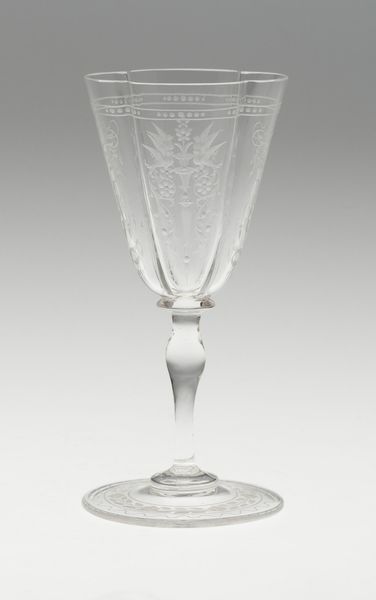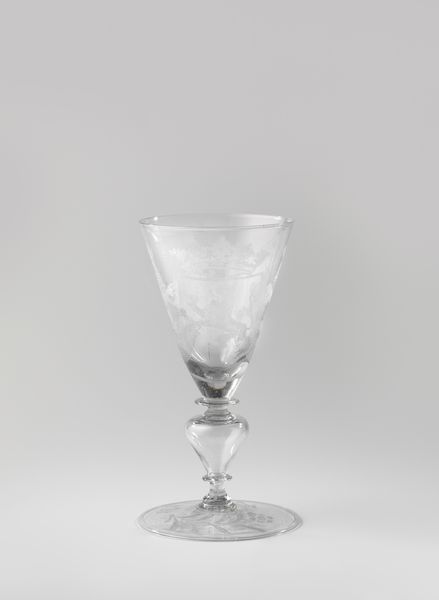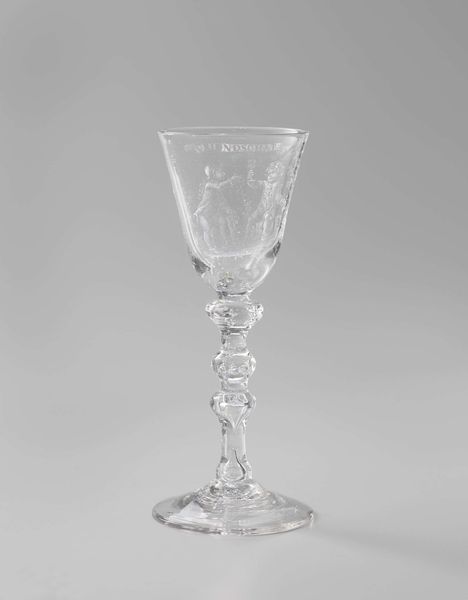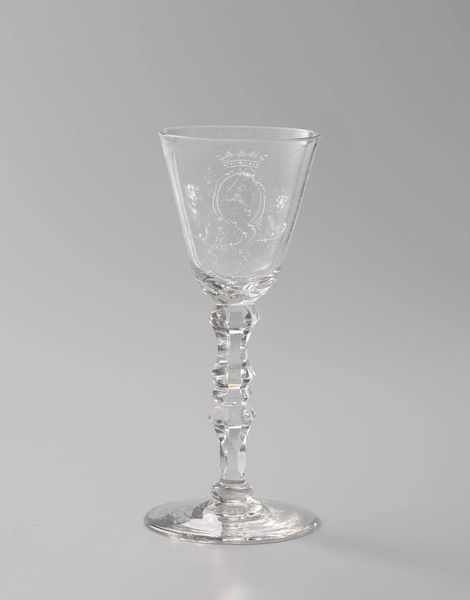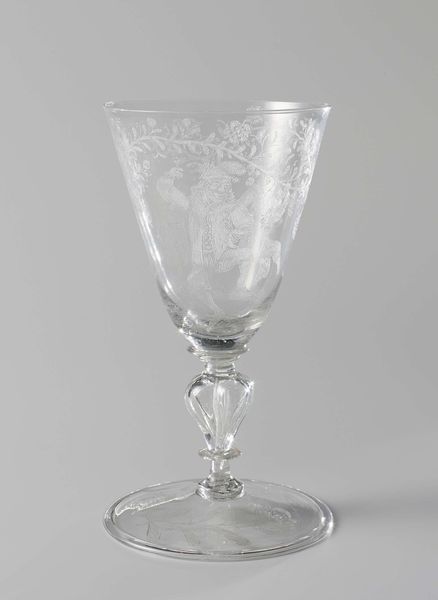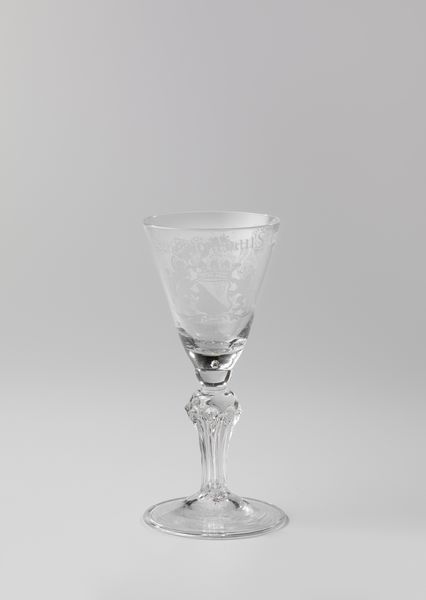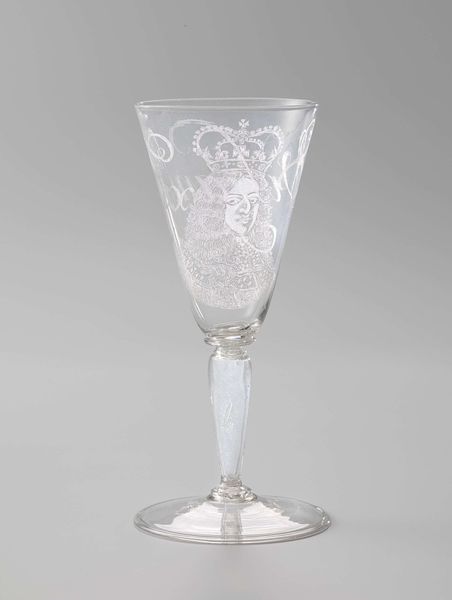
silver, metal, sculpture
#
silver
#
baroque
#
metal
#
sculpture
#
decorative-art
Dimensions: Height: 7 5/8 in. (19.4 cm)
Copyright: Public Domain
Curator: Here we have a silver wine cup, a gorgeous piece of decorative art dating from 1607 to 1608. Its elaborate craftsmanship firmly places it within the Baroque period. Editor: My first impression is the contrast. The cup’s intricate engravings juxtapose beautifully with the clean lines of its stem. It feels both opulent and incredibly restrained. Curator: Absolutely. Silverware of this kind functioned not only as functional objects but also, importantly, as markers of social status. Owning such pieces allowed elite families to showcase their wealth and refined tastes. The Baroque style itself was instrumental in promoting these sorts of demonstrations. Editor: It’s a display, undoubtedly, but what kind of stories does that display tell, or conceal? The luxury represented here was funded and maintained by very unequal social structures, something easily obscured by this level of aesthetic refinement. Curator: I agree that the patronage system underpinning such artistic endeavors raises difficult questions about access and equity, however, the level of artistry is undeniable. These are master craftsmen, demonstrating immense skill with metalwork. Do you see the floral motifs and the stylized geometric shapes worked into the cup? Editor: I do. I think it speaks to the ways in which symbols and imagery become entangled with power, where objects of beauty serve to naturalize specific hierarchical orders. Consider the symbolism of wine itself within European cultures; that adds further layers of meaning, doesn't it? Who was allowed to partake, who was excluded? Curator: That's right, access to the materials and the labor for a piece like this, these were all functions of political and social structures. The craftsmanship represents the society from which it comes. It would have graced the tables of the privileged. Editor: Indeed. As much as I appreciate its artistry, it invites critical examination of the societal dynamics in that historical context, and its relationship to the current state. A stunning artifact that also represents inequality. Curator: A perfect reminder that aesthetic appreciation often calls for thoughtful analysis of historical contexts and social consequences. Thank you. Editor: Precisely. It encourages a dialogue on our relationship with beauty, history, and justice. Thanks!
Comments
No comments
Be the first to comment and join the conversation on the ultimate creative platform.
